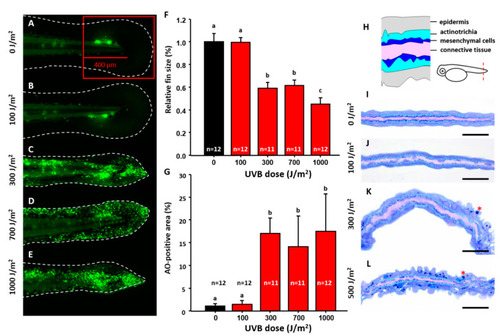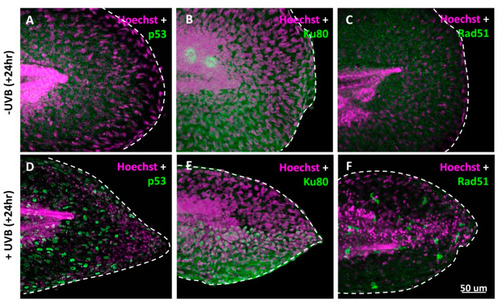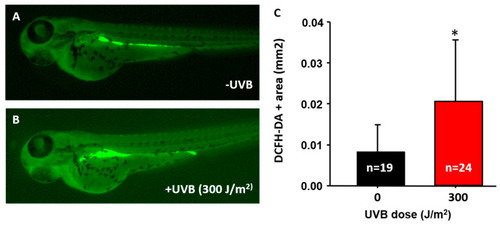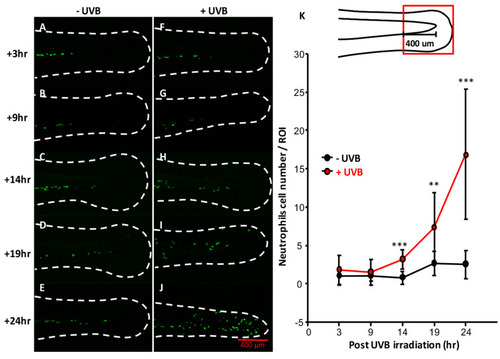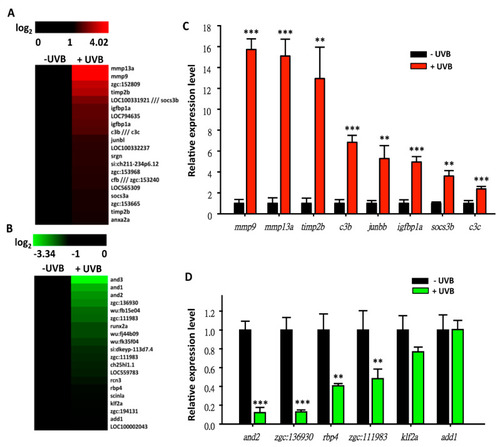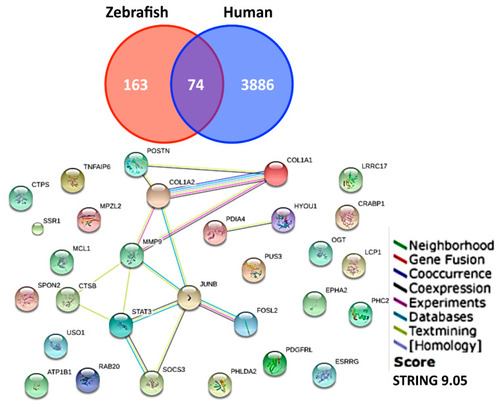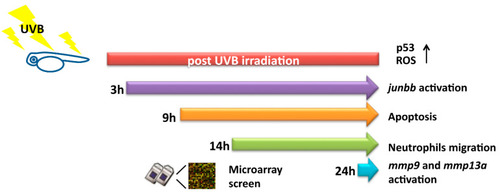- Title
-
UVB Irradiation Induced Cell Damage and Early Onset of Junbb Expression in Zebrafish
- Authors
- Chen, R.Y., Lin, C.J., Liang, S.T., Villalobos, O., Villaflores, O.B., Lou, B., Lai, Y.H., Hsiao, C.D.
- Source
- Full text @ Animals (Basel)
|
Optimization of UVB irradiation dosage to induce caudal fin damage in zebrafish. Zebrafish embryos aged 3 dpf were exposed to UVB irradiation at different doses of 0 ( |
|
Time course changes of caudal fin in zebrafish after UVB irradiation. Zebrafish embryos aged 3 dpf were irradiated with UVB at doses of 300 J/m2. ( |
|
UVB activates p53 and DNA damage in zebrafish. Embryos aged 3 dpf were irradiated with UVB (+UVB) at a dose of 300 J/m2. Twenty-four hours later, the irradiated embryos were fixed and stained with p53, Ku80, and Rad51 antibodies. Embryos without ( |
|
UVB induces zebrafish cells to produce reactive oxygen species (ROS). Embryos aged 3 dpf were irradiated with UVB at 300 J/m2. Embryos were stained with 40 μM DCFH-DA to detect the ROS. ROS expression without ( |
|
UVB irradiation induces inflammation in zebrafish. Neutrophils reporter line Tg ( |
|
Microarray profiling of gene expression in zebrafish embryos after challenging with UVB irradiation. Heat map showed the upregulated genes ( |
|
Functionally overlapping genes were compared between humans and zebrafish. ( |
|
The temporal expression profiling of |
|
Summary of the cellular responses and gene expressions after UVB irradiation in zebrafish. |

